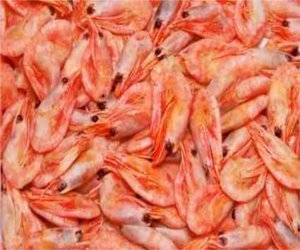Prawn Size Guide
The size of prawns will depend on the species being  analyzed. One of the largest is the giant river prawn or Malaysian prawn. This species can get as long as 12 inches (30 cm). Other prawn species are smaller.
analyzed. One of the largest is the giant river prawn or Malaysian prawn. This species can get as long as 12 inches (30 cm). Other prawn species are smaller.
Classifications
The prawn is under the Dendrobranchiata sub-order and is a decapod crustacean. In terms of phylogeny, prawn and shrimp are not the same. However, the term prawn is used to describe shrimp and other similar creatures. Indeed, many prawn species are called shrimp, like the Atlantic white shrimp (Penaeus setiferus) and the whiteleg shrimp (Litopenaeus vannamei).
Other species are the tiger prawn (Penaeus monodon), giant river prawn (Macrobrachium rosenbergii) and the Indian prawn (Fenneropenaeus indicus).
The prawns are separated into seven families, two in the Sergestoidea and five in the Penaeoidea family. There are 540 existing species plus another 100 fossil specimens.
The oldest known fossil is from the Permo-Triassic age c. 250 million years ago.
Physical Characteristics
While the size of prawns may vary among species, their physical traits are similar. The gill on the species branches out (it is lamellar in real shrimps). The prawn family Luciferidae is notable for not having any gills when they mature.
Many prawns also possess three claws on their legs. The shrimp has claws on two of them. The prawns differ from the other decapods in that their eggs are placed in the water following fertilization.
Whiteleg Shrimp (Pacific White Shrimp)
The whiteleg shrimp (Litopenaeus vannamei; used to be known as Penaeus vannamei) is one of the most frequently farmed prawn (strictly speaking, it is not a shrimp).
These species can be found along the eastern Pacific especially in Mexico and Peru. They are also found at Ecuador and Brazil. The high demand for the prawn has resulted in its inclusion among animals being sourced from untenable fisheries.
Giant River Prawn
The giant river prawn (Macrobrachium rosenbergii) is a freshwater shrimp. Although the size of prawns in this species can reach 30 cm, there are a few males that can reach 32 cm. The females usually reach a length of 25 cm. The species is commonly found north of Australia and around the Indo-Pacific region.
Characteristics
The species is a freshwater type but studies show the larval level requires brackish water. The shrimp will go to freshwater only when the shrimp has reached juvenile status (gone beyond the planktonic level) will it reside in freshwater.
Reproduction takes place when the male shrimp sends the spermatophores to the thorax of the female. The female proceeds to extrude the eggs. The eggs will then go to the spermatophores, leading to fertilization.
The eggs will remain with the female until it is time to hatch. This may take three weeks or more. Some females can lay more than 80,000 eggs. When the eggs hatch they will undergo changes until they turn into prawns.
The size of prawns and the ease with which they can be raised has made amateur cultivation very popular. This is particularly true in various areas in the United States.





